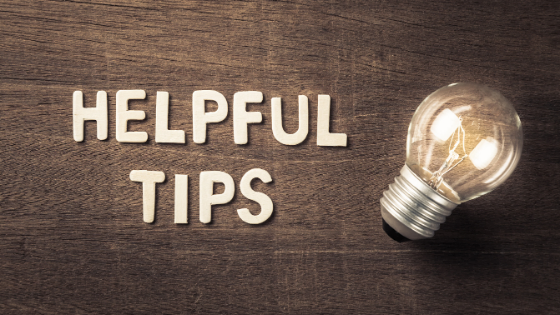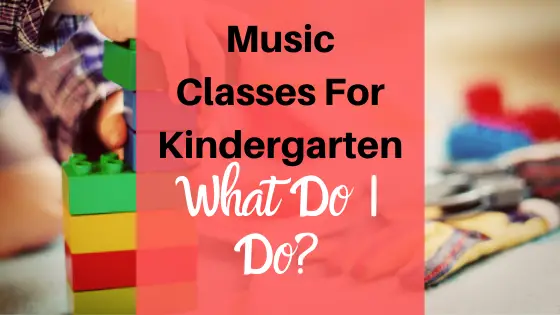Are you a new music teacher realizing you have to teach Kindergarten?
Does the idea of managing 20-30 large toddlers make you nervous?
It should! Kindergarten can be a difficult age to teach if you don’t have the right tools and mindset.
But that’s what this post is for: to help you get through music classes for Kindergarten.
Kindergarten music doesn’t have to be scary if you come at it from the right angle. Focus on teaching broad contrasting musical concepts, filling in a lot of songs and games, and realize you need to keep things moving along quickly.
Read on for more details and help teaching Kindergarten music.
Table of Contents
What To Teach In Kindergarten Music
In order to successfully teach Kindergarten music, you need to decide what to teach. Choosing concepts too complicated may set up your whole year for failure.
There are different schools of thought on exactly what to teach, but they’re all unified within the same idea:
Don’t worry about notes. Let kids be kids and give them a good musical experience.
This being said, there are 3 main approaches to teaching Kindergarten music. Personally, I think that any of these will work just fine; it all depends on how much time you have and your personal preference.
Note: We didn’t talk about teaching music notes to Kindergarten. While this is possible, you may not want to. Read the linked post for more details.
Experience Only
The experience only approach is all about giving students a positive music experience in their first year. All methods want this for their students, but this approach focuses entirely on this.
For this, you’d spend your entire class cycling through songs, games, dances, and other activities.
The idea is that students may pick up understanding of beat and pitch (how to describe melody) through exposure, but whether they get it at this age or not isn’t crucial.
Big 3
For those wanting a bit more than just experience, you may want to focus on the Big 3. The 3 concepts you’ll reinforce all year are: beat, pitch, and expression.
In your classroom, you’ll spend most of your time singing, playing, and dancing. But you’ll also intentionally reinforce and teach matching pitch, moving to the steady beat, and moving and discussing the expressive qualities of music.
These 3 concepts are famously called “tuneful, beatful, and artful” by Dr. John Feierabend and his First Steps in Music program. You may also know him by his Conversational Solfege method.
Contrast Contrast Contrast
The next approach piles on to the last two. Then, the teachers add more instruction on broad contrasting concepts such as these:
- Steady vs unsteady
- Loud vs soft
- Fast vs slow
- Sound vs silence
- Long vs short
- High vs low
- Same vs different
- Macro vs micro
This classroom still looks like mostly singing, playing, and dancing. In between, there is more instruction on these ideas.
These ideas are supported by many music teachers and methods.

8 Tips For Planning Music Classes For Kindergarten
Picking any of these 3 approaches is just fine. But now you need to know how to plan a Kindergarten music lesson.
In this section, I’ll share 8 tips for music classes.
#1 Quick Pacing
Humans, and especially Kindergartners, can only pay attention for so long before their minds start to wander. The general rule of thumb is that a kid can pay attention for 1 minute plus their age.
Since most Kindergarten kids are 5 years old, this means they can theoretically pay attention for 6 minutes. If the activity is active, this may be the case.
There is a common belief among teachers that this rule doesn’t hold up as well in the modern-day. You may want to stick closer to 3-5 minutes before switching activities.
This doesn’t mean you have to switch a song every 5 minutes. You just need to switch up the activity you’re doing with the song.
#2 Get Them From The Moment They Enter
Transitions are key with this age group, so even the act of entering a room can throw them completely off-task. This is why getting them engaging in music from the moment they enter the room is so important.
Here a few ideas of what to do with students as they enter:
- Follow you in a circle echoing patterns
- Follow you, call and response “Hello Class!” “Hello Mr(s). ____”
- Music is playing and students start by marching or free moving
- Student move to seats while teacher plays a mystery song
#3 Vary Concentration Levels
Switching up activities every 5 minutes or so is great, but it’s not enough to get the most out of your kids. You also need to alternate concentration levels.
Often, activities that are low energy require more concentration. An example of this would be a rhythm reading activity that doesn’t have students moving, but they’re focused on the act of reading.
Low concentration activities usually have higher energy activities. This would be something like playing a chase game around the circle; it’s fun, but you aren’t focused on learning a concept.
To help Kindergarten kids with overall focus, you need to alternate high and low concentration activities.
#4 Use Different Intelligences
Kindergarten students don’t always have the skills to help themselves if they’re struggling to learn something. They don’t know how they learn best yet.
So if you spend a lot of time talking to them about music ideas, some students will disengage (and often cause behavior problems). And it’s not always a case of students being bored, they may be frustrated because your style isn’t reaching them.
As you’re switching activities, make sure you also keep different learning styles in mind. Try to vary your types of learning to cover visual, kinesthetic, aural, and mathematical learners.
For more details on this, check out this post on differentiation.
#5 Set Up Procedures
Teaching Kinders is often compared to herding cats. But it doesn’t have to be this way and setting up procedures well ahead of time is key to this.
From the get-go, students need and want to know what they’re supposed to do. Kids crave structure and consistency.
For example, I count down from 5 as my quiet signal, and I expect students to do this with me. But it doesn’t happen naturally; I have to teach and reteach this all the time.
To get this procedure locked in, I do the following steps:
- Explain the procedure
- Model the procedure
- Practice with the kids
- Offer feedback and practice again
The next class, I’ll do this again. And repeat.
Eventually, I’ll leave off the explanations at the start of class. But as soon as they forget or don’t do it correctly, I jump right back into those steps again.
For more on procedures, check out this NEA article.
#6 Use Rewards
I’m not ashamed to admit I use rewards. When we train our kids to go to the bathroom, we often give them treats as a reward.
But we don’t expect them to use this reward forever. In the beginning, though, you’ll give one every time.
It’s similar in Kindergarten. They can use rewards consistently to help reinforce the procedures you’re trying to set up.
It doesn’t have to be a treat; it can be anything really. I use stars.
Every class can earn 5 stars per music meeting. They earn the stars by following rules and procedures.
At the end of class, I make a big deal to their teacher about the number of stars they earned. Kids love it.
Sometimes, I’ll let students showing excellent behavior draw the stars on the board, or I’ll give them a sticker with a star on it.
But I always connect it to appropriate behavior, and I withdraw the amount as the year goes on.
#7 Connect Outside Of Class
All students, but especially those with troubled home lives, are looking for a connection. They want to trust you before they can learn from you.
In Kindergarten, they’re very willing to connect with you, but it’s hard to take the time in such short class periods (often 25 minutes to an hour). You still need to teach music.
And sometimes taking the time in class actually backfires. Letting one kid tell a “quick” can devolve into every student wanting to talk and all focus is lost.
So what’s the solution? Make time to connect outside of class.
Stand in the hallway as they come in. Take some time out of your lunch as you walk down the hall to help one of them get their coat on.
I can’t tell you how many times I’ve had students with difficult behaviors whose trouble melts away once I make a connection with them. Give it a shot; you won’t regret it!
#8 Be Consistent
For all the above tips, do them and be consistent. Keep things moving every class. Vary the concentration and intelligences every time.
Set up and follow through procedures every time. None of us can be perfect all day every day, but Kinders want to know what to expect when they come to class.
Changing things up can be fun, but try to keep it within the framework of what a normal class looks like.
Favorite Resources For Music Classes For Kindergarten
Here are a few of my favorite resources for teaching Kindergarten. I’ve used all of these and stand by them.
By clicking on a link to Amazon, I may earn a small commission as an affiliate. But I do stand by these products and their usefulness.
American Folk Song Collection – This free resource is a collection of folk songs you can sort by grade level, game type, and theme.
The Music Effect Book 1 & 2 – This is my personal favorite book for Kindergarten. Dr. Nelson spells out specific activities for teaching broad contrasting concepts with different intelligences in mind.
Parachutes, Ribbons, And Scarves, Oh My! – Listening and moving are key activities in Kindergarten. This collection is fun to use with movement props and is pulled out regularly in my room.
First Steps In Music For Preschool And Beyond – For those looking for a comprehensive and stepped out program to teach beat, pitch, and expression, this is it. I’ve also seen Dr. F present many times and always enjoy this part of his program.
Jump Right In: Kindergarten Teacher’s Guide Book – For those looking for a more scientific approach, the Jump Right In series is a Music Learning Theory book. Personally, I feel like this book does a great job of teaching beat in its most important ways.
Kids Can Listen, Kids Can Move! – Lynn Kleiner is the queen of music movement. This book is my bible for movement games.
If I had to pick only one, I’d choose the Music Effect or First Steps. Everything else, for me at least, is a big supplement to these comprehensive resources.
Conclusion
I hope you find the guide on music classes for Kindergarten helpful. Keeping these tips in mind and borrowing from the resources mentioned will set you up for success!
What are your concerns with Kindergarten? Let us know in the comments.

